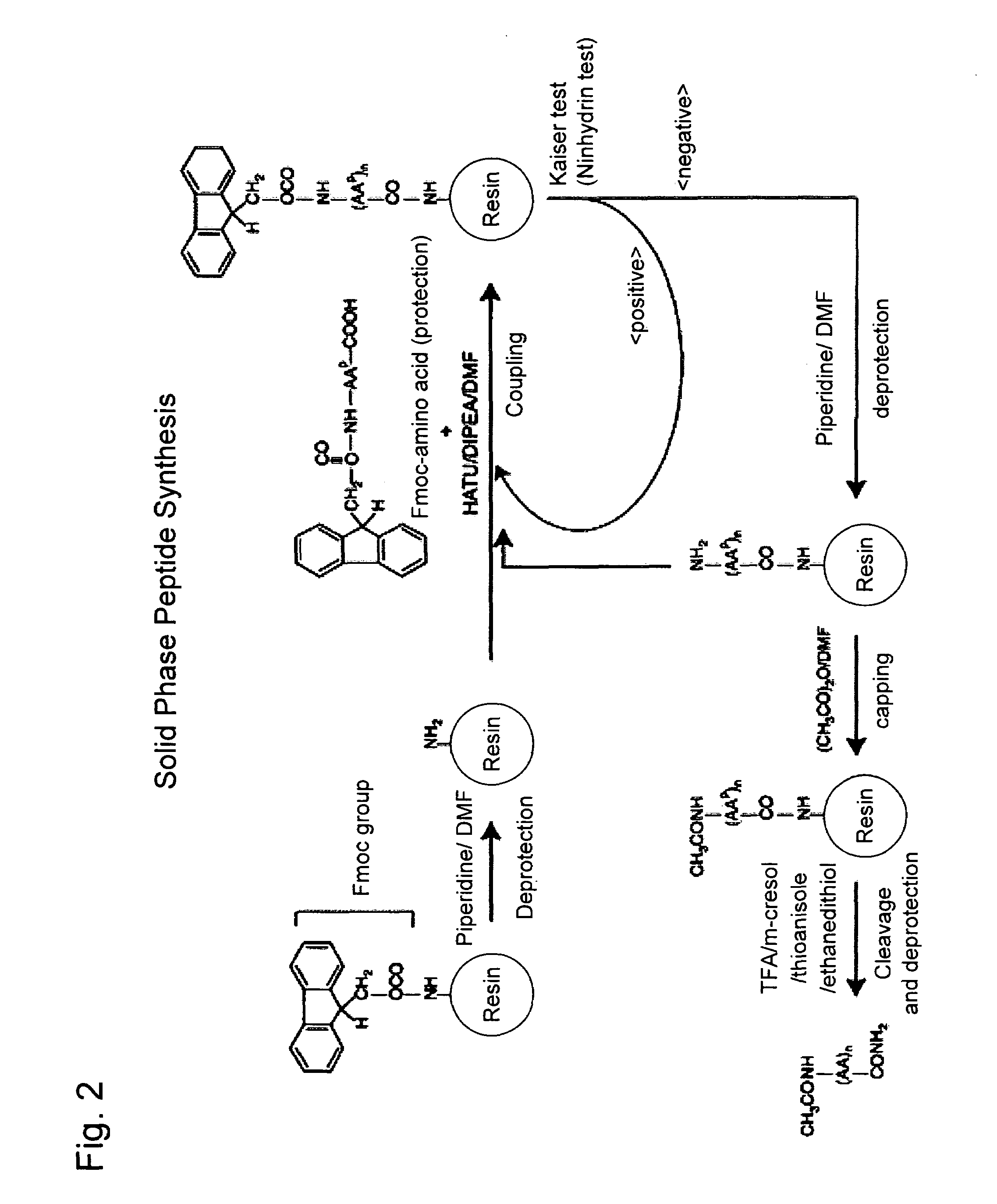VHL peptide
a peptide and peptide technology, applied in the field of oligopeptides, can solve the problems of difficult neuronal induction, difficult to overcome ethical issues and rejection reactions, and difficulty in taking, etc., and achieve the effect of facilitating cell membrane penetration
- Summary
- Abstract
- Description
- Claims
- Application Information
AI Technical Summary
Benefits of technology
Problems solved by technology
Method used
Image
Examples
example 1
[0034]VHL oligopeptide of amino acids No. 157 to No. 171, which is a binding site of elongin, that is an important binding protein of VHL protein. was prepared according to solid phase synthesis method based on Fmoc method. Solid phase synthesis of an oligopeptide based on Fmoc method was performed. Fmoc-SAL-PEG resin (Watanabe Chemical) was used as solid carrier. By using this resin, an oligopeptide carboxyl(C) terminal of which is aminated can be obtained. After this resin was washed with DMF (N,N-dimethylformamide), Fmoc which is a protective group of amino group was removed with 20% piperidine / DMF. After wash with DMF, condensation reaction of amino acids was carried out by adding 3 equivalents of Fmoc-AA (amino acid)-OH / 3 equivalents of HATU (O-(7-azabenzotriazole-1yl)-1,1,3,3-tetramethyluronium-hexafluorophosphate) / 6 equivalents of DIEA (diisopropylethylamine) for the amino group on the resin, and the progress of the condensation reaction was confirmed by ninhydrin reaction. A...
PUM
| Property | Measurement | Unit |
|---|---|---|
| concentration | aaaaa | aaaaa |
| concentration | aaaaa | aaaaa |
| concentration | aaaaa | aaaaa |
Abstract
Description
Claims
Application Information
 Login to View More
Login to View More - R&D
- Intellectual Property
- Life Sciences
- Materials
- Tech Scout
- Unparalleled Data Quality
- Higher Quality Content
- 60% Fewer Hallucinations
Browse by: Latest US Patents, China's latest patents, Technical Efficacy Thesaurus, Application Domain, Technology Topic, Popular Technical Reports.
© 2025 PatSnap. All rights reserved.Legal|Privacy policy|Modern Slavery Act Transparency Statement|Sitemap|About US| Contact US: help@patsnap.com



